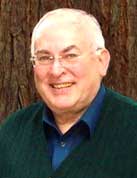Seeds of Change Chapter 8: Project Sustainability
From Vincentian Family News Blog's introduction to the Systemic Change: Seeds of Change series: Pope John Paul II encouraged people to analyze the situation of the poor carefully, to identify the structural roots of poverty, and to formulate concrete solutions.
This article continues a 20-week series, offered by the members of the Commission for Promoting Systemic Change, about strategies that are useful, often even essential, for bringing about such change.
Strategy 7: Make the project self-sustaining by guaranteeing that it will have the human and economic resources needed for it to last.

by Joseph P. Foley, C.M.
Whether a project survives depends on its having permanent human and economic resources. That’s an obvious, but intimidating aspect of working for a systemic change. But it can be done.
Jesus León Santos of Oaxaca, Mexico succeeded at putting together the resources for sustainability. In fact, this week he won US $150,000 in the Goldman Environmental Award for a project that rehabilitates some of the earth’s most highly eroded land into fertile ground for farming. The method: use ancient, indigenous practices.
The organization Santos leads, Center for Integral Small Farmer Development in the Mixteca (CEDICAM), had pieced together a budget of $100,000, with funds coming from organizations such as Bread for the World, Maryknoll Lay Missionaries and Mexico’s National Forestry Commission. But the critical resources are CEDICAM, a democratic, farmer-led local environmental organization which Santos co-founded 20 years ago, and Santos, himself.
León has united the area’s small farmers. Approximately 1,500 small farmers organized into 12 communities have reversed hundreds of years of environmental damage. How? They have planted more than a million native-variety trees, built hundreds of miles of ditches to retain water and prevent soil from eroding, and adapted traditional practices to restore the regional ecosystem.
The approach is holistic. People plant trees, change agricultural practices, shift from raising goats to raising sheep in order to protect trees and even change their eating habits to emphasize locally grown food. There are more than a dozen plant nurseries in different villages and ecologically sound drainage ditches are being built.
The challenge was daunting, the effort has been tremendous, and the payoff is huge. Bleak, desolate hillsides are becoming green again, aquifers are being recharged, the high rate of migration is slowing and at last indigenous farmers are able to make a living at home.
The systemic change is sustainable because the critical human resources, and therefore in this case the economic resources, are in place. Strategy 8 depends on other strategies addressed in this series: a holistic vision, the ability to make a compelling case for the project, the commitment of a core group, and a plan that demonstrates that the project is both realizable and sustainable. Strategy 8 also depends on factors such as a clear need, timing and a strategic entry point into the system in question. With these factors in place, one can usually attract initial seed money.
But if the human and financial costs of bringing an enterprise to a successful completion, and beyond that, to sustainability, are not calculated in advance, the enterprise is likely to end in that large, sad graveyard of potentially great projects.
The Gospel tells us as much when it cautions: if you wanted to build a tower will you not first calculate the outlay for fear of starting the work and not being able to complete it. Luke 14:28
Perhaps St. Vincent’s encouragement to perseverance says the same thing: ..to begin is nothing; what is required is perseverance...'
In bringing about systemic change, the fruit of perseverance is sustainability.
Read the story of Jesus Leon Santos at the Goldman Prize site
Index of Systemic Change: Seeds of Change series
